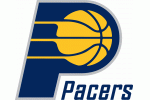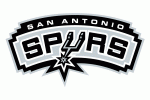DISMEMBER THE ALAMO!
 -VS-
-VS-
Game Time Start: 8:00 PM EST
Where: The Fieldhouse, Indianapolis, IN
Officials: D. Crawford, S. Bolnick, J. Goble
Media Notes: Indiana Notes, San Antonio Notes
Television: FOX Sports Indiana / FOX Sports Southwest
Radio: WFNI 1070 AM / WOAI 1200 AM, KCOR 1350 AM
NBA Feeds:
*NBA Audio League Pass (available free to NBA All-Access members)
*NBA League Pass Broadband (subscription req'd)
*NBA League Pass Broadband (subscription req'd)
REMINDER: Per PD policy, please do not share a link to, describe how to search for, request a link to, or request a PM about streaming video of a NBA game that is not coming directly through the NBA. Not even in a "wink-wink, nudge-nudge, know-what-I-mean" round-about sort of way. Thank you

|
|
 |
 |
 |
 |
 |
 |
 |
 |
 |
 |
 PACERS Danny Granger - left knee tendinosis (out)     SPURS Kawhi Leonard - tendinitis, left knee (out) Stephen Jackson - fractured right finger (out) |
Jared Wade: Who Wants to Watch the Mediocrity Treadmill? After nine games, Indiana has the second-worst offense in the league. Scoring only 92 points per 100 possessions, the Pacers are only bested in impotence by the winless Washington Wizards. Things went from bad to worse this week, when the Pacers lost on their home floor despite holding the Toronto Raptors to five fourth-quarter points, then completely mailed in a game in Milwaukee. At a 2011 conference dedicated to sports statistics, Kevin Pritchard coined — or at least popularized — the phrase “mediocrity treadmill.” This NBA phenomenon, which in broad terms is created by the rules governing salaries and player movement, is something he suggested should be avoided at all costs. Its premise is simple: there is no point in trying to put together an average team, so if you can’t shoot for the stars then you should burn down your team and bury it underground. Try to be great or try to be horrible, those are the only two ways to compete. The problem with being average is that it is very expensive to do so and it necessitates locking many middling players into long-term guaranteed contracts. And in the process, you lose not only a legitimate shot to compete with the league’s elite teams but also all financial flexibility to improve your team. So if you can’t acquire a few truly great players who can carry you to a title, you should just liquidate the roster and stock up on draft picks and young, improving players on rookie contracts (which the collective bargaining agreement keeps artificially cheap no matter how talented they are). The salary cap just doesn’t permit you to sign enough middle-of- the-road, $8 million-per-year players to field a contender, so you need to bottom out, clear cap space and retool the roster around a few highly productive players who earn $15 million and a few more who make under $5 million. The Pacers, much to the chagrin of most national basketball writers I have seen discuss the subject, refused to bottom out. They have tried to take the mediocrity treadmill route. Rather than admit their early millenium run was over and falling to bottom of the standings — like the Heat, Nets Grizzlies and Timberwolves — the Pacers haven’t won fewer than 32 games in any season since 1989. (It should be noted that when Pritchard discussed the mediocrity treadmill at that MIT stats conference, he had yet to be hired by the Pacers in any official capacity.) One of the suspected motivations for the Pacers’ refusal to bottom out — and the one I subscribe to — is that the franchise quite literally couldn’t afford to. After the Brawl, the team’s fanbase was so turned off, so disgusted that those in power believed that a string of sub-25-win seasons might lead to financial losses so large that it might force to owner to sell. At worst, the result — especially if no Deron Williamses, Marc Gasols or Kevin Loves were acquired, which is always a risk — could be the end of the Pacers in Indiana. Or, less bad but still unacceptable, the franchise could get bad and stay bad for years while owner Herb Simon took eight-figure financial losses each year for a decade as he watched his team spiral the drain of irrelevance and futility. Thus, their decision was at least understandable if still unpalatable. The on-court result wasn’t pretty (Troy Murphy was second on the team in shots one year), but last year’s attendance figures did start to show that the team’s paying fanbase, many members of which swore off the team forever during the Jail Pacers era, was growing. Coming into this season with high expectations, it looked like the Pacers had outrun the mediocrity treadmill. Maybe they couldn’t beat the Heat, but they seemed to have a legit shot at making the Eastern Conference Finals, and they would certainly once again be a product worth watching. But something funny happened on the way to the bank: The Pacers may have become terrible...CONTINUE READING AT 8p9s |
| Jesse Blanchard: Injuries and the wrong kind of small ball Size remains a premium in the NBA, even as the league trends smaller and quicker. Since their first round playoff loss to the Memphis Grizzlies, the San Antonio Spurs have been perceived as especially vulnerable to teams with large frontlines. While head coach Gregg Popovich continues to audition frontcourt partners for Tim Duncan—with Matt Bonner making a case for more playing time last night—the Spurs had quietly upgraded and deployed size in less obvious ways than bringing in another seven-foot shot blocker. In trading George Hill for Kawhi Leonard and bringing back Stephen Jackson, gone were the days of three guard lineups that stressed the Spurs defensive rotations against any team with even a modicum of size on the wings. With two oversized wings, the Spurs had an endless amount of roster versatility at their disposal and a framework for better defense. “With length at the two and three positions, often times can lend itself to a little bit better overall defense,” Popovich said a season ago. “More deflections, more contested shots, better rebounding, crowding the court a little bit more. All kinds of little things that add up to big things can happen with bigger people.” With Stephen Jackson out for a 4-6 weeks with a broken finger, and Kawhi Leonard expected to be out for two weeks, the Spurs figure to be hurting for size. “It’s difficult to lose any player, especially if you lost your starting small forward a couple of games before,” Manu Ginobili said when asked about Jackson’s injury after the game. “We’re going to be shorthanded for a while and we’ll have to figure it out. It’s going to be hard but it’s a good test for us.” Against the Los Angeles Clippers the Spurs failed that test. While the initial defense remained stout in the fourth quarter, forcing the Clippers into a number of difficult, contested shots, any defensive rotation from the frontcourt left the Spurs vulnerable on the glass—which the Clippers exploited to great effect. It remains to be seen what...CONTINUE READING AT 48 MINUTES OF HELL |
  Pacers Mike Wells @MikeWellsNBA Jared Wade @8pts9secs Tim Donahue @TimDonahue8p9s Tom Lewis @indycornrows |
  Spurs Jeff McDonald @JMcDonald_SAEN Andrew McNeill @drew_48MoH Aaron McGuire @docrostov Pounding the Rock @poundingtherock |
 / laugh at PosterX / GroupOfPeopleY who thought / believed *insert though/belief here*"
/ laugh at PosterX / GroupOfPeopleY who thought / believed *insert though/belief here*"








Comment